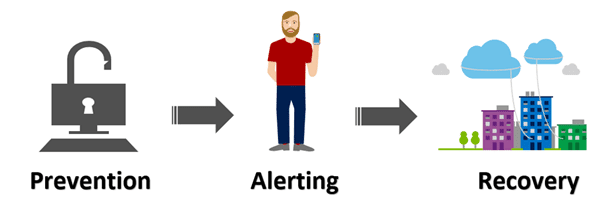What the coming educational VR revolution teaches us about the tech’s future
By Pete Sena as written on techcrunch.com
Imagine the following scenario: A fifth-grade science class has just begun and the teacher makes a surprise announcement — today the students will be dissecting a frog.
I’m sure you remember dissecting a frog as a kid — the sour-pickle odor of formaldehyde, the sharp scalpels slicing into rubbery skin. You don’t have to be an animal rights activist to grimace a bit thinking about it.
But here comes the paradox. In this scenario, like-minded fifth-graders who are queasy about cutting open animals are excited to participate in this dissection. Indeed, no animal was harmed when the specimens were collected. What’s more, the teacher promises the students that they won’t have to clean up a messy station afterward.
How? Thanks to the paradigm-shifting creations of zSpace, an educational VR/AR company, students can harmlessly dissect an animal on an interactive screen known as the zSpace 200. Students wear a special pair of glasses equipped with sensors and use a stylus that allows them to engage with a virtual image that can be turned or even disassembled.
By importing VR/AR into the classroom, one minute students can explore the anatomy and organs of an animal without harming it, and the very next build and test circuits or set up experiments that test Newton’s laws.
For young students who have been inundated by tech in almost every other domain of their lives, this form of learning comes naturally.
“Kids say, ‘Well of course it should be like this.’ They believe they should be able to reach into a screen, grab something, pull it out, and interact with it,” said Dave Chavez, chief technology officer of zSpace.
While VR is often discussed as a gaming technology, the gaming applications of VR are simply the first wave in a sequence that will profoundly shape the way we experience content over the next five years. Educational startups have been working on VR material for classrooms ranging from kindergarten through medical school. Current estimates project that the global edtech market will reach $252 billion by 2020; VR will capture a big chunk of this pie.
The next step in the democratization of knowledge is VR.
As for parents (and the rest of us), we continue to adopt the tech slowly. In 2016, only 6 percent of Americans will own a VR headset. While this can be attributed to cost and other barriers to entry that are being knocked down as the technology evolves, learning more about how VR is being used to reshape student engagement and communication teaches us more about how it will soon shape our digital experiences by serving as a conduit for previously impossible connections.
“Virtual reality puts people first,” said Facebook founder Mark Zuckerberg after his recent demo onstage at Oculus’ Connect Conference. “It’s all about who you’re with. Once you’re in there, you can do anything you want together — travel to Mars, play games, fight with swords, watch movies or teleport home to see your family. You have an environment where you can experience anything.”
The democratization of experiences
Throughout history, monumental developments have expanded society’s access to education. In the early first millennium BCE, the first written alphabets appeared and provided an easy medium for recording information relevant to the common good, whether it be a religious text or a business transaction.
The following centuries witnessed the creation of books and libraries, which then allowed for written content to be stored and accessed by more than just the super-wealthy.
Johannes Guttenberg’s invention of the moveable-type printing press in the 1450s made it even cheaper and more efficient to publish and purchase books on subjects like philosophy, mathematics and commerce. In the 20th century, the computer and internet transformed educational access more than any other past advancement, democratizing the world’s collective knowledge to anyone with a connection.
A student’s capacity to discover and learn will no longer be limited to the environment around them.
The next step in the democratization of knowledge is VR. This emerging educational platform will make it possible for students to virtually visit museums in other continents, communicate in virtual learning spaces with fellow students in Johannesburg, Beijing or Sydney or attend a lecture at a prestigious university thousands of miles away. It can not be overstated how important this is for the future of education — a student’s capacity to discover and learn will no longer be limited to the environment around them.
From a UNICEF Teacher’s Handbook based on facilitating the education of children around the world:
“Children learn best from experience. Children learn by doing, using their senses, exploring their environment of people, things, places and events. They learn from first-hand and concrete experiences as well as vicarious forms of experiences. Children do not learn as effectively when they are passive. Active engagement with things and ideas promotes mental activity that helps students retain new learning and integrate it with what they already know. If it is not possible to always provide concrete, first-hand experiences for the student, efforts must always be exerted so that the student will be able to understand the concept in a clear and concrete way.”
With educational VR, it will always be possible to provide concrete first-hand experiences. While the current cost of adoption is too high for VR to reach under-funded schools, it will eventually decrease, as is almost always the case with new technologies. In the time that it takes, I’d bet the world becomes a fully connected place.
The internet democratized knowledge, VR will democratize experiences. It will continue to shrink an increasingly globalized world and facilitate better communication and collaboration across physical spaces. It will be the next innovation in the transmission of knowledge that not only shapes how we learn, but how we conduct business and maintain relationships with our friends, family and like-minded people, wherever they may be.
How VR enhances communication and collaboration
Increasingly, the success of businesses hinges on their ability to communicate and collaborate.
VR is the perfect medium for achieving these ends. Because VR will become a more and more integral part of the business world, the earlier students are exposed to non-gaming uses of VR, the more prepared they will be to interact in the virtual work spaces of tomorrow.
Some students learn best by hearing, others by seeing. With VR, you get the best of both. Educational visionaries that develop educational VR hardware and software are not just improving learning; they are rethinking it altogether.
One of the features that distinguishes the aforementioned zSpace 200 from other VR educational technologies is that students can easily collaborate and speak with one another while using their VR computer.
“The most profound thing I’ve ever heard a teacher say is that many technologies build a barrier between us and the kids but this seems not to,” said Chavez.
Far too often, VR is mistaken to be a solitary, lonely experience.
But even VR platforms that place the user in virtual worlds are not necessarily isolating experiences. Immersive VR Education, a developer headquartered in Ireland, has created a social learning platform called Engage. Engage gives educators the tools to create their own lessons and immersive experiences, all without needing to commit a line of code. Inside these immersive lessons, teachers and students can connect and use collaborative tools like an interactive whiteboard.
“In virtual reality when the avatar is two feet away from you, it really feels like they are two feet away from you,” said David Whelan, CEO of Immersive VR Education.
Whether inside the Coliseum or a hospital ER room, Engage allows educators to transport their classroom to wherever it is most relevant to the students.
“People learn best through experiences or doing tasks themselves. So if you are teaching, say, Aircraft maintenance and you are working on a Boeing engine. [In VR] You can bring in an engine, you can bring in parts, and have 4 or 5 students come in and collaborate in the virtual space. You [the educator] can say, ‘Alright guys you have 45 minutes to put this engine together and the students can lift parts that may weigh 4 or 5 tons, and manipulate them quite easily,” said Whelan.
For now, apps like this are primarily designed to shift how students and teachers interact in today’s learning spaces. In the future, educational work spaces such as Engage lecture halls will double as business boardrooms or co-working spaces for creative problem-solving.
Far too often, VR is mistaken to be a solitary, lonely experience — as a technology for play that enables escapists to further isolate themselves in a digitally created world. But this could not be further from the truth. Indeed, Facebook has invested so heavily into VR because their company’s vision is to connect the world.
“This is really a new communication platform,” said Zuckerberg after acquiring Oculus. “By feeling truly present, you can share unbounded spaces and experiences with the people in your life. Imagine sharing not just moments with your friends online, but entire experiences and adventures.”
The challenges facing educational VR in the U.S.
Much of the material VR companies are innovating for classes will not be purchased for personal use but by school districts, colleges and universities. The price for the hardware and software will not be cheap. For example, the Oculus Rift retails for $599.99 at Best Buy. Persuading these constituents to adopt VR/AR will be a challenge.
Marketing will be critical for getting constituents to adopt VR in schools and higher education. VR edtech companies will need to develop innovative marketing strategies that drive educational organizations to invest in VR. The impediments facing the adoption of VR edtech are similar to those VR faces in being adopted in other domains. Once parents see the upside of educational VR, they will become more comfortable with VR enhancing other forms of communication and its application in other work spaces.
VR educational companies will need to get creative not just when it comes to promoting VR to educators but also speaking with local and state politicians.
Convincing early adopters to buy into educational VR systems like zSpace and Immersive will be critical for its spread.
To give an example, one of zSpace’s biggest challenges is simply to get people to see it. Once young kids see it, they are enamored.
“I’ve seen a kid run out to the curb and yank his mom out of the car…and tell her ‘Mom, look at this! Look at what I did!’ It makes me want to tear up,” said Chavez.
“A lot people see VR as a gaming or entertainment peripheral, so the biggest challenge is getting educators who have been teaching lessons the same way for years and years to change their mindset,” said Whelan. “We have to convince them that it isn’t just a new way of providing the same old content, this a completely new way of teaching.”
Especially during this time when state legislatures are gutting educational budgets, VR educational companies will need to get creative not just when it comes to promoting VR to educators but also speaking with local and state politicians. This latter group must be persuaded that educational VR is worth the price. To persuade them, educational VR firms need to get in front of parents, students, teachers, administrators and political leaders. Educational VR innovators must convince them that the windfall warrants the upfront investment.
The next horizon in VR education
Where will educational VR head next? One possibility is that museums will begin to use 360-degree cameras and transform their collections and elaborate corridors into material that students all over the world can interact with by wearing an Oculus Rift or HTC Vive. Imagine a sixth-grade student in rural Arkansas putting on a VR headset in his social studies class. The teacher tells the class, “Today we are going to visit one of the greatest art collections in the world, the Louvre.” The app then transports the student to the gallery that houses Leonardo da Vinci’s Mona Lisa.
What would normally cost several thousand dollars and constitute a luxury trip that most American students could only dream of can become an immersive, interactive component of the students’ curriculum.
These virtual spaces will consist of customized avatars that can express features ranging from happy to confused. It won’t be long before a fourth-grade class in Newark, New Jersey will be able to go on a virtual school trip to the British Museum with a class of fourth graders from Kyoto, Japan. While the kids are on the virtual school trip, their parents can attend to their VR business meetings.
You may think this sounds like sci-fi, but 10 years from now this futuristic school trip to the Louvre may seem like the Atari of VR.
“I’m old enough to remember when computers came into schools first in the late 80s and early 90s. They sat there for years gathering dust because teachers didn’t want to touch them,” said Whelan. “But just like computers, VR will creep its way into education. In fact, I believe it will be adopted much sooner because people my age are teachers and accustomed to the rapid change of technology.”
Whelan also points out that VR set-ups are actually much cheaper than early PCs.
“When PCs first came out they were two or three thousand dollars, now you can get a really decent VR headset connected to a PlayStation for under 800 dollars, and the technology is just going to become cheaper.”
VR will be the next link in the sequence that has witnessed the human urge to connect and enhance communication stretching back several thousand years. It is a reimagination of what education can become and it will prepare students for a connected future of democratized virtual experiences and global communication and collaboration.
Continued Reading

February 17, 2017
Azure Backup security capabilities for protecting cloud backups
Azure Backup security capabilities for protecting cloud backups By Pallavi […]
LEARN MORE
February 18, 2017
The new Office.com gets first major update
The new Office.com gets first major update By Tom Batcheler […]
LEARN MORE

